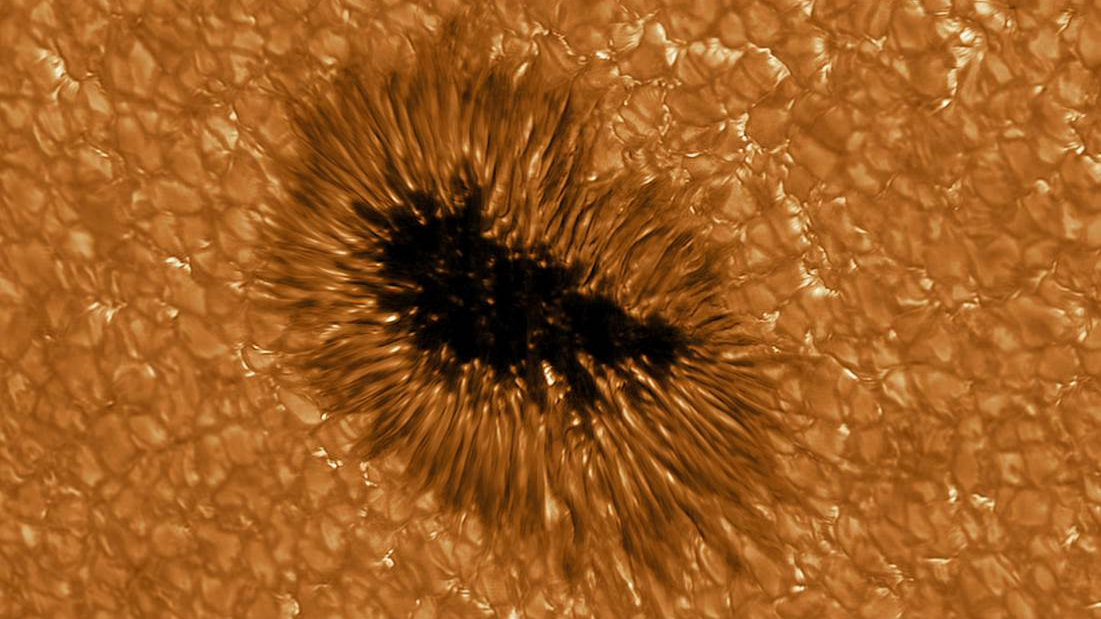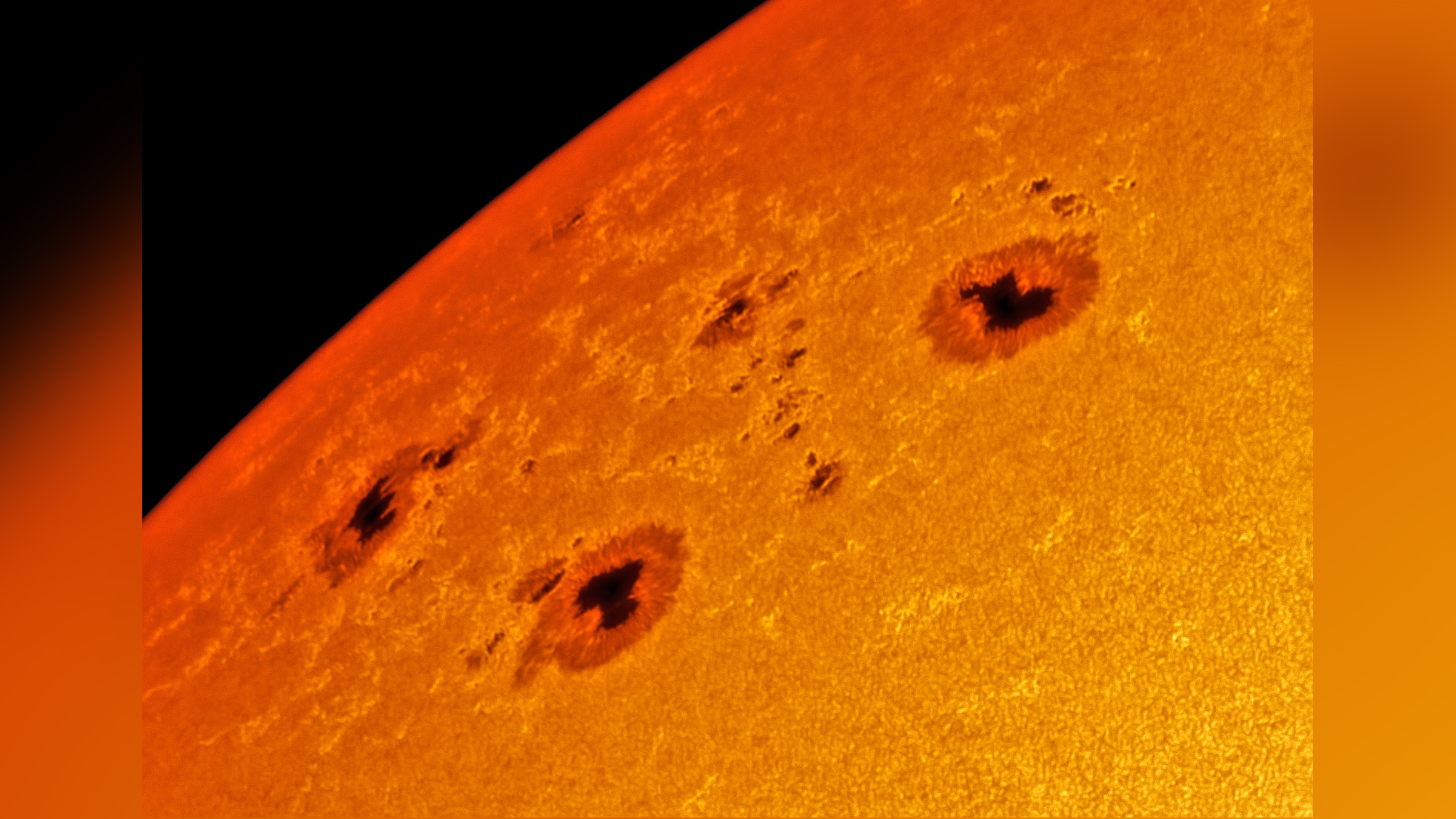Why are sunspots black?
Is it just a cosmic optical illusion?

The sun is a great ball of fiery, electrically charged gas. As the sun advances through its regular 11-year solar cycle, electromagnetic activity on the star's surface gets more and more chaotic. This turbulence inevitably leads to the appearance of sunspots — dark, planet-size regions that form in the sun's lower atmosphere as a result of intense magnetic disturbances.
To most visible-light telescopes, sunspots appear black. But why do they look this way, and are they really black?
It turns out that sunspots aren't actually black. Rather, the darkness is just an optical illusion created by the contrasting heat of sunspots and their surroundings.
"Sunspots are only dark in contrast to the bright face of the sun," according to the University Corporation for Atmospheric Research (UCAR). "If you could cut an average sunspot out of the Sun and place it elsewhere in the night sky, it would be about as bright as a full moon."
The reason sunspots appear so much darker than the rest of the sun's visible surface, or photosphere, is because they are much cooler, and the gas underneath a sunspot emits about 25% as much light as the rest of the sun, according to NASA.
Sunspots are still scorching hot — astronomers estimate that the temperature of a typical one is about 6,300 degrees Fahrenheit (3,500 degrees Celsius) — but the surrounding photosphere blazes at roughly 10,000 F (5,500 C), according to the National Weather Service (NWS).
Sunspots are cool because they form in regions where magnetic fields are especially strong — roughly 2,500 times stronger than Earth's, and far stronger than anywhere else on the sun, according to the NWS. This increases the magnetic pressure exerted on sunspots, thereby inhibiting the flow of heat from the sun's interior to the surface and leaving the region cooler than its surroundings.
Get the world’s most fascinating discoveries delivered straight to your inbox.
The pent-up magnetic energy of sunspots can have some spectacular — and dangerous — side effects. When the magnetic-field lines around sunspots become too tangled, they can snap into new configurations, releasing sudden bursts of magnetic energy. This energy can interact with the surrounding plasma — hot, electrically charged gas that makes up much of the sun — and create an explosion of energy known as a solar flare.
Related: Could a solar storm ever destroy Earth?
Solar flares always occur in active regions near sunspots, which means the more sunspots there are on the sun at a given time, the more likely a flare is to erupt. Sunspots are more likely to occur near the climax of the sun's 11-year activity cycle, also known as the "solar maximum," when magnetic activity peaks.
The heat from a flare can, in turn, trigger another sort of explosion called a coronal mass ejection (CME), in which charged solar particles blast straight out of the sun’s atmosphere and zoom across space at high speeds.
Most CMEs sail harmlessly into space. But if a CME happens to be aimed at Earth, there can be harmful consequences. As a CME passes over Earth’s atmosphere, it can knock out power grids, cause radio blackouts or damage satellites; life on Earth remains protected by our planet's magnetic field, but astronauts working in space may be hit with higher-than-normal doses of radiation.
But there's a bright side: When a CME hits Earth, the resulting rain of charged particles through our planet's atmosphere causes auroras to appear at much lower latitudes than usual. For that beautiful display of color in Earth's sky, you can thank a big, dark dot on the sun.
Originally published on Live Science.

Brandon is the space / physics editor at Live Science. With more than 20 years of editorial experience, his writing has appeared in The Washington Post, Reader's Digest, CBS.com, the Richard Dawkins Foundation website and other outlets. He holds a bachelor's degree in creative writing from the University of Arizona, with minors in journalism and media arts. His interests include black holes, asteroids and comets, and the search for extraterrestrial life.




